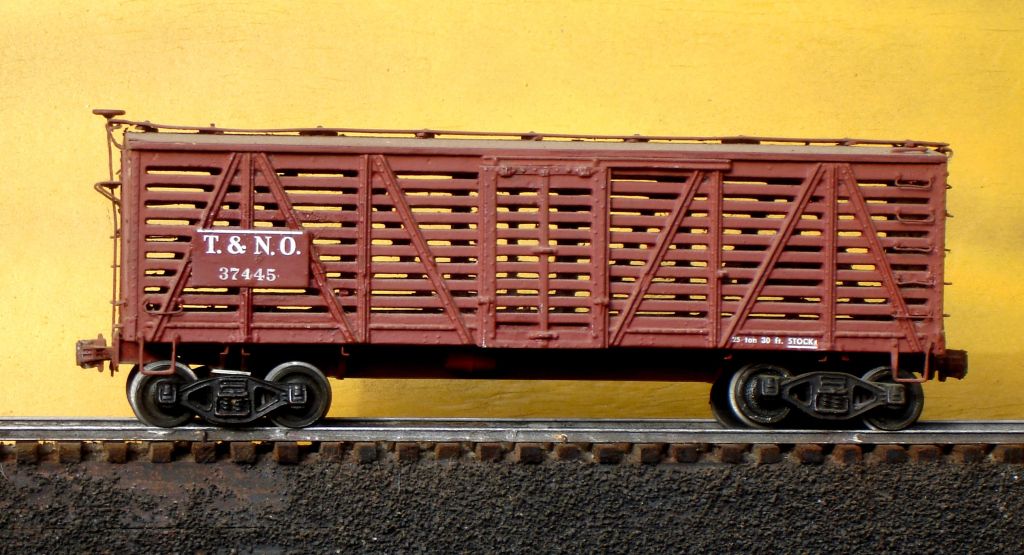Graz
Ed and Bob have good info on the Atlas and Lionel Stock cars. Both are scale models of 40 foot long stock cars. The Lionel car is based on an older prototype and is similar in height and width to a USRA box car or a ice bunker refrigerator car. The Atlas Trainman model has the same dimensions as a post-WWII box car.
Atlas and Weaver both make their stock cars with the same ends and roof as box cars in their product line. As Ed said, the Atlas stock car shares the same R+3/4 improved dreadnought ends and Stanray diagonal panel roof as the Trainman 40' plug and sliding door box cars. These were very common ends and roof panels used by a variety of builders and railroad car shops from the late 1940s into the diesel era. Weaver uses the Pullman-Standard ends and bow-tie roof panels from their PS-1 box cars.
MTH uses early 4/5 dreadnought ends with a Stanray diagonal panel roof on their premier line stock car. The tooling is unique to the MTH stock car. The MTH PS-1 box car and AAR box car have different ends and roofs.
The Atlas Trainman, MTH and Weaver stock cars are all similar in dimensions and represent some of the last 40 foot stock cars built new or rebuilt by railroad car shops from other cars.
The Lionel Standrd O stock car was introduced back in 2002. It is based on a 1930s American Car and Foundry prototype. It has 4/4 dreadnought steel ends but a wooden roof and sides.
The K-Line stock car is also worth mentioning. It is similar in size to the Lionel Standard O stock car and a reasonably good scale model. It has dreadnought ends and a Murphy rectangular panel roof. Lionel has continued to offer this car as one of their K-Line by Lionel products.
Smaller dimensioned stock cars like the Lionel and K-Line models were common into the 1960s. In the 1950s and 60s some of the western railroads started to operate larger cars similar to the Atlas, MTH and Weaver models. Weather smaller and older or newer and larger in dimension stock cars were often rebuilt from used components in railroad cars shops. Some odd components could end up on a stock car. I have seen photos of a stock car with three piece ends of two different types. I have even seen a photo of a stock car with a lumber door on one end. Hopefully it was welded shut! What ever your taste in stock cars know that trains in the 1940s, 50s and 60s should have box cars, reefers and stock cars with varying roof heights. We have five good stock car options to chose from in O scale and they represent the variation in car dimensions seen in the post-WWII era. 
When making up trains please take note: Stock cars would be placed immediately behind the locomotive to minimize the chance of injury to the animals due to slack action.





